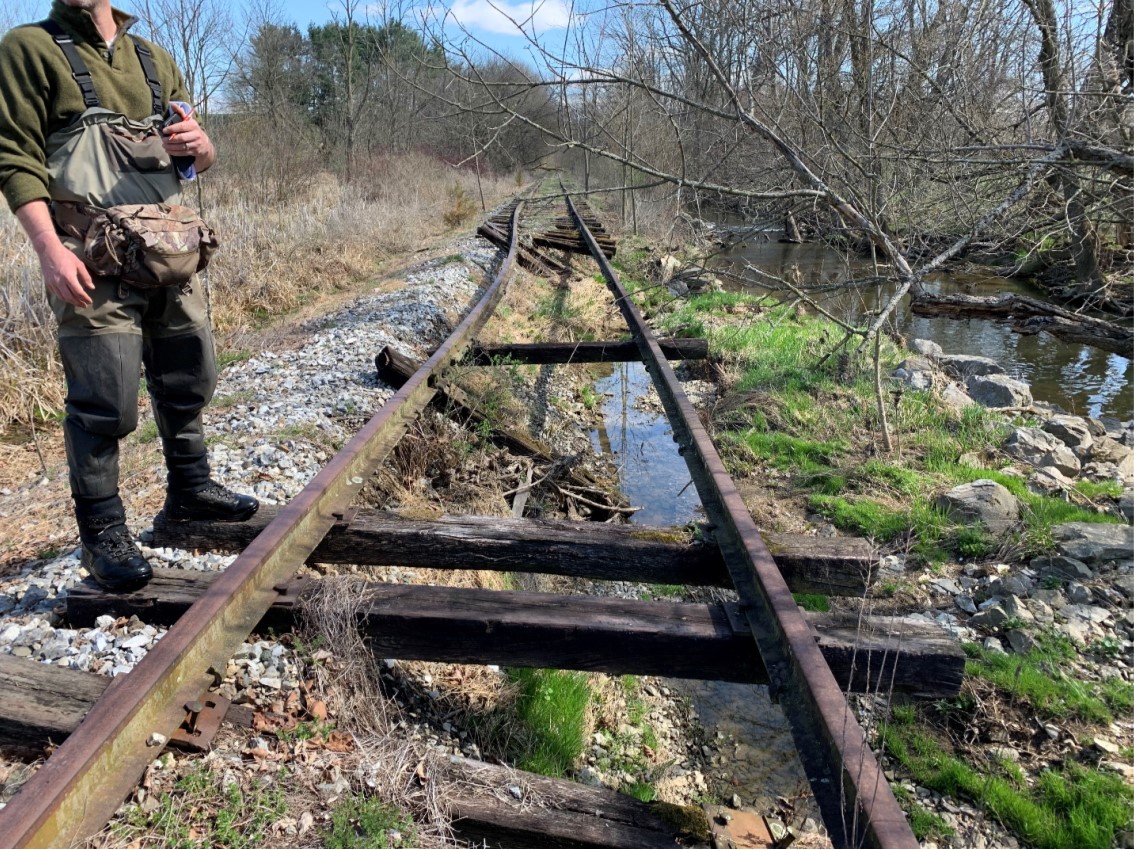The York County Rail Trail Authority (YCRTA) has been designing and building rail trails in York County since 1990. At the completion of their first project in the summer of 1999, the Heritage Rail Trail’s former President Commissioner, Robert Minnich, declared with a smile, “On to Hanover!”
Over twenty years later, the Authority was presented with a rare opportunity to purchase 8.5 miles of dormant rail line in Heidelburg Township but soon discovered an immediate challenge. They would have to stabilize one mile of rail corridor, which for years had experienced storm surges from the nearby Oil Creek. But that didn’t scare them! They decided to rise to the challenge, knowing the project would result in improved water quality and stream ecology for Oil Creek and the downstream watercourses of Codorus Creek, Susquehanna River, and the Chesapeake Bay.
With a grant from YCCF’s Codorus Watershed Funds, the Authority was able to hire LandStudies out of Lititz in Lancaster to complete an Oil Creek Watershed Restoration Plan. The Plan, completed in July 2021, provided a historical look at the utilitarian uses of the creek stretching back to the 1820s, an assessment of current impairments at seven specific reaches, and most importantly a comprehensive restoration plan for 5,432 linear feet of Oil Creek in Heidelberg Township.
Gwenyth Loose, Executive Director of the York County Rail Trail Authority, explained how the restoration will benefit the community, not just those who will enjoy walking or exercising on the trail. “It’s a win for everyone,” said Gwenyth. “The impact from this restoration will continue for generations. Rebuilding the banks will prevent the stream from overflowing, which will also help local farmers who are always worried about stormwater runoff. By restoring Oil Creek, we can stabilize the land and improve the soil conditions. Our area has seen an increase in extreme weather and it’s really important to be proactive and do what we can to prevent flooding and damage to agricultural lands,” she continued.
The restored trail will run parallel to the Hanover Trolley Trail expansion – a feature that many people have enjoyed since 2008. The restoration of these two sections of Oil Creek is estimated to annually reduce 243,788 lbs. of sediment, 407 lbs. of nitrogen, and 369 lbs. of phosphorus. That’s something to smile about!









